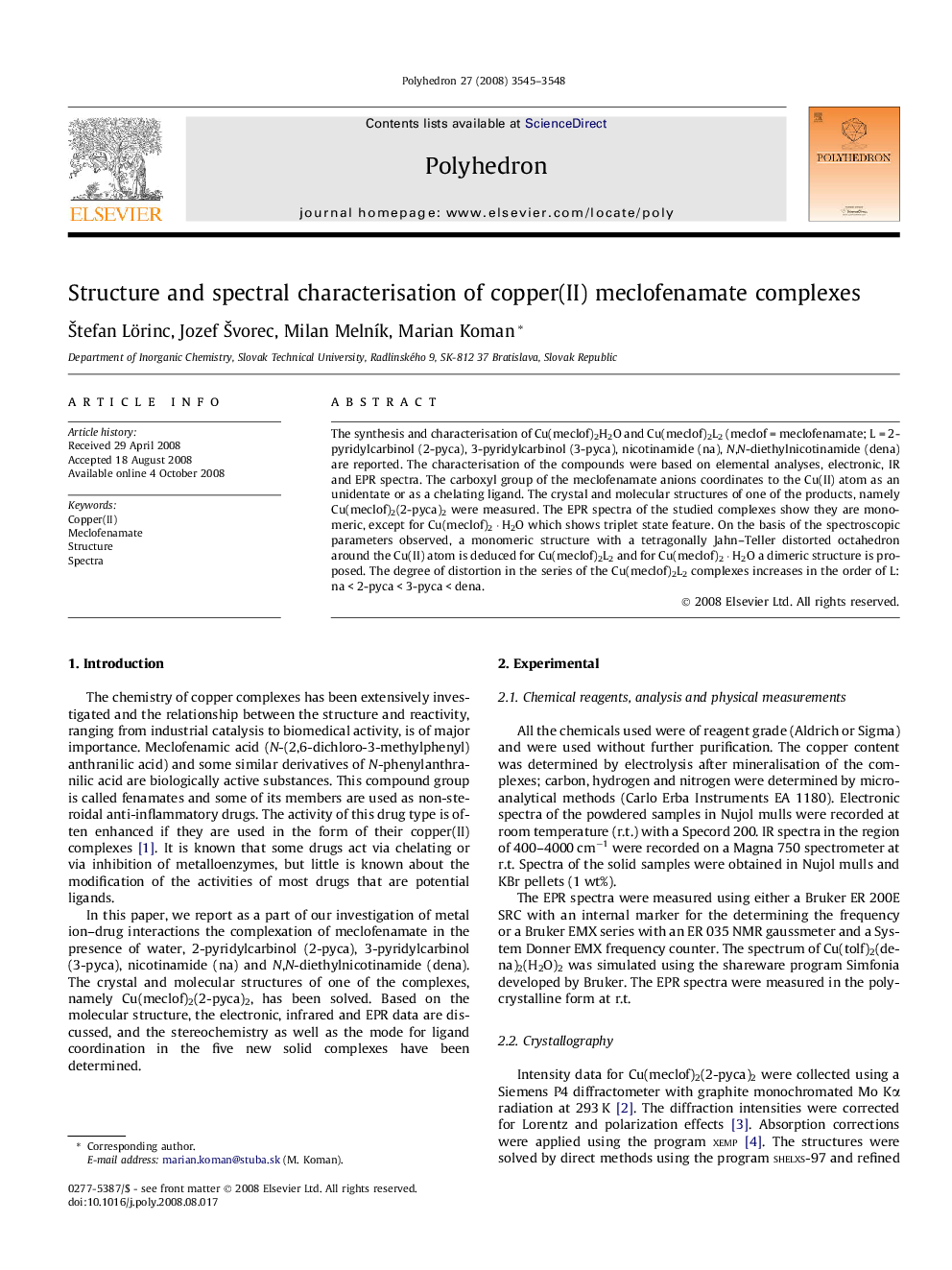| Article ID | Journal | Published Year | Pages | File Type |
|---|---|---|---|---|
| 1335245 | Polyhedron | 2008 | 4 Pages |
The synthesis and characterisation of Cu(meclof)2H2O and Cu(meclof)2L2 (meclof = meclofenamate; L = 2-pyridylcarbinol (2-pyca), 3-pyridylcarbinol (3-pyca), nicotinamide (na), N,N-diethylnicotinamide (dena) are reported. The characterisation of the compounds were based on elemental analyses, electronic, IR and EPR spectra. The carboxyl group of the meclofenamate anions coordinates to the Cu(II) atom as an unidentate or as a chelating ligand. The crystal and molecular structures of one of the products, namely Cu(meclof)2(2-pyca)2 were measured. The EPR spectra of the studied complexes show they are monomeric, except for Cu(meclof)2 · H2O which shows triplet state feature. On the basis of the spectroscopic parameters observed, a monomeric structure with a tetragonally Jahn–Teller distorted octahedron around the Cu(II) atom is deduced for Cu(meclof)2L2 and for Cu(meclof)2 · H2O a dimeric structure is proposed. The degree of distortion in the series of the Cu(meclof)2L2 complexes increases in the order of L: na < 2-pyca < 3-pyca < dena.
Graphical abstractCharacterisation of Cu(meclof)2(2-pyca)2 has been made based on elemental analyses, electronic, IR and EPR spectra. The crystal and molecular structures of Cu(meclof)2(2-pyca)2 were measured. The carboxyl group of the meclofenamate anions coordinates to the Cu(II) atom as an unidentate or as a chelating ligand. On the basis of the spectroscopic parameters observed, a monomeric structure with a tetragonal bipyramidal geometry around the Cu(II) atom is deduced for Cu(meclof)2L2 and for Cu(meclof)2 · H2O a dimeric structure is predicted.Figure optionsDownload full-size imageDownload as PowerPoint slide
